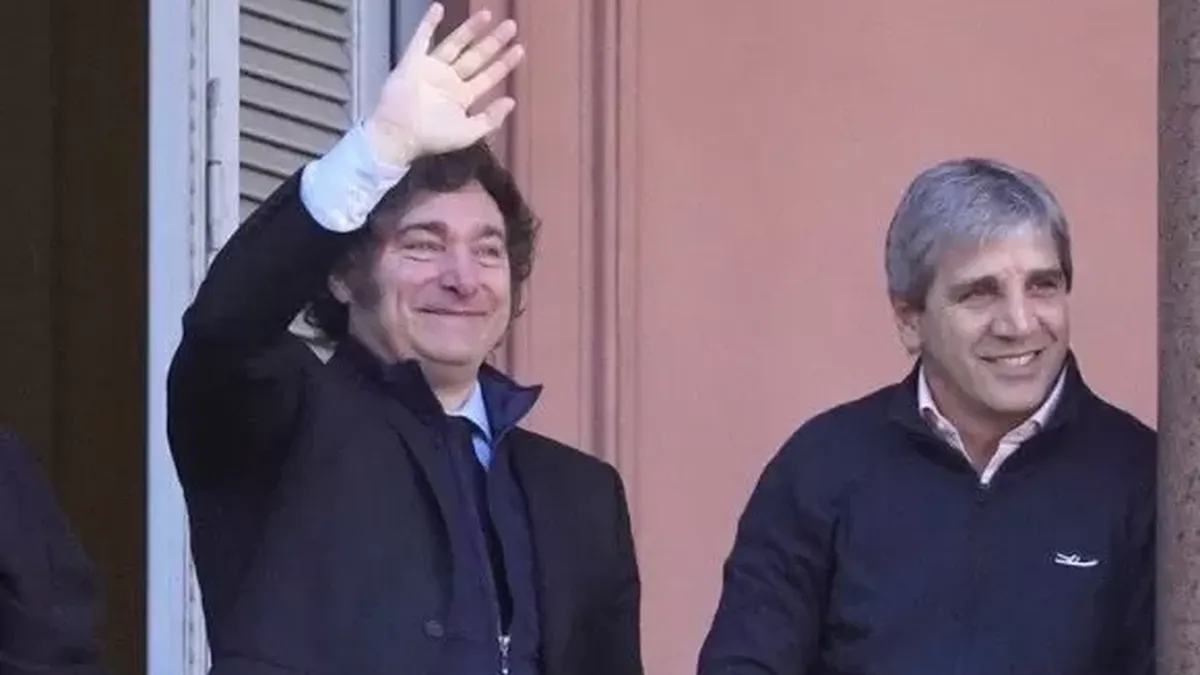Javier Milei and Luis Caputo are betting on eight tools to contain the dollar and avoid shocks before October.


The government has defined a new battlefront in the electoral race: the exchange rate . With their sights set on October, Javier Milei and his economic team have deployed a plan that combines fiscal discipline , financial incentives, and market signals to sustain the value of the peso and avoid a surge in the dollar that would complicate expectations.
The exchange rate remains below the center of the established floating range—currently between $1,000 and $1,400—without intervention from the Central Bank and with a reserve level that is trying to recover. The result, so far, is a stability that sustains the disinflation plan. But this calm doesn't come without a price: at least eight mechanisms are at work behind it.
- Soybeans and the fiscal calendar : The second quarter accounts for the bulk of foreign currency settlements in the agricultural sector. The imminent increase in withholdings starting in July, following a temporary reduction, is boosting sales and accelerating the inflow of dollars.
- Peso-denominated bonds to raise foreign currency : The Central Bank is working on a new tool that will allow the purchase of bonds in pesos, but with access to dollars. The goal: to absorb local currency and strengthen reserves.
- Foreign investors and carry trade : With rules that guarantee a minimum stay of six months, incoming capital takes advantage of the positive real rate. They exchange currencies, invest pesos in instruments, and return to dollars with guaranteed returns.
- Targeted money laundering : Luis Caputo targets the US$200 billion outside the financial system. The new money laundering scheme seeks to channel some of these funds into the formal economy, with benefits for those who bring in capital.
- Vaca Muerta, the second largest driver : Energy has gained prominence as a source of foreign currency. Exports from the Neuquén Basin are growing and consolidating their position as the second largest source of dollar income, after agriculture.
- Direct investment and the RIGI regime : With the end of restrictions on certain transactions and the new Large Investment Incentive Regime, the government hopes to attract capital with exchange freedom and legal security.
- Surplus and absorption of pesos : The Treasury maintains its commitment to not issuing pesos and maintaining a primary surplus. This reduces the money supply and, with it, exchange rate pressure.
- Dividend bonds and monetary vacuum cleaners : the strategy includes dollar-denominated bonds for companies looking to turn over profits, which can be purchased with pesos. The message is clear: there will be no issuance to support the exchange rate.
The dollar's calm has become a central part of the official narrative. The government knows this: without shocks in the foreign exchange market, inflation has room to continue falling. But some economists warn that the real appreciation of the peso is already significant and could affect competitiveness, especially in sectors that depend on exports or local production versus imports.
"If the exchange rate continues to fall, the risk is not only for activity, but also for the sustainability of the balance," warned Alejandro Cuadrado , BBVA strategist.
For now, the economic team is playing for calm. As Federico Furiase , director of the Central Bank of Argentina (BCRA), explained, the combination of fiscal discipline, monetary controls, and specific bonds seeks to strengthen credibility without straining the system. The strategy, as those close to the President admit, is to buy time: consolidate stability until October and then, with greater political power, advance structural reforms.
“Anker Point” and dollar purchases at the floor of the band in dynamic general equilibrium.
In dynamic general equilibrium, remonetization via the Treasury returning pesos in primary auctions against debt cancellation and monetization via… are not perfect substitutes . pic.twitter.com/w9RhW3UFmh
Meanwhile, the message is one: the stable dollar is part of the model, not a market fact.
elintransigente





